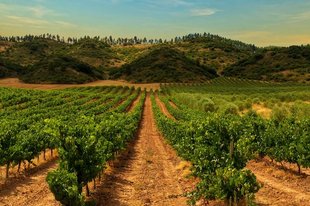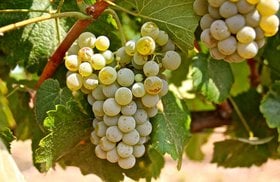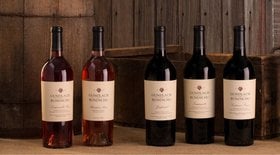10 Most Famous Spanish Wine Regions (Winemaking, Best Wines 2025)
Did you know that there are over 130 Spanish wine regions?
The world's third-largest wine producer, Spain produces exquisite wines from around 400 grape varieties.
It's home to the fortified Sherry, the refreshing Cava, the full-bodied Rioja wine, and many more exotic styles.
Here’s your handy Spanish wine guide 2024! Explore the top 10 Spanish wine regions and their best wines, the appellations, wine styles, and the winemaking practices in the region.
Further reading
- Check out these delicious Spanish Red Wines.
- Find out all about Dry Red Wines and the best bottle to buy!
A Quick Intro to Spanish Wine Regions and Wines
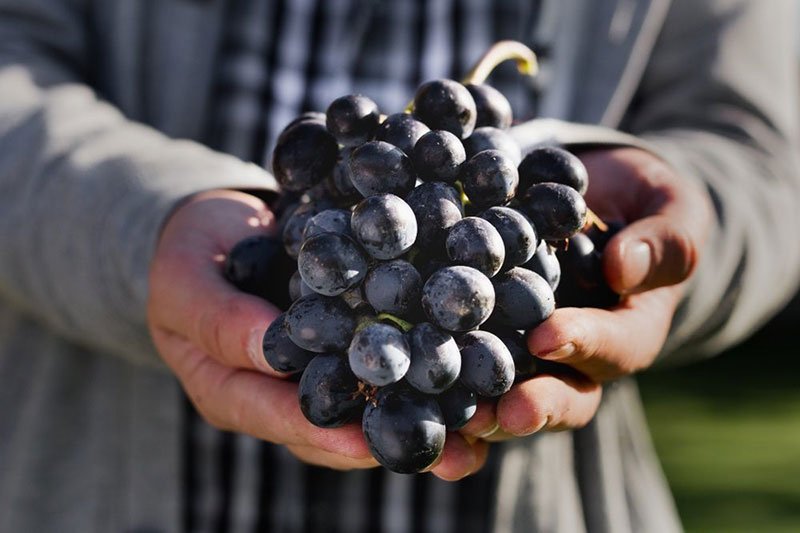
Some of the most famous Spanish grape varieties include:
Red:Tempranillo, Garnacha, Monastrell, Bobal, Syrah, Merlot, Mencia
White: Airen, Albarino, Verdejo, Palomino, Xarel-lo, Macabeo, Parellada
These grapes benefit from Spain’s peninsular climate and varying soils, giving birth to exotic wine styles in different regions.
The north and northwest regions are called “Green Spain” due to their lush vineyards. They are famous for crisp Rias Baixas white wines (made from the Albarino grape) and The Basque Country’s signature fizzy wine, Txakoli.
Further inland, the drier and warmer La Rioja, Ribera del Duero, and Bierzo (Castilla y Leon) regions produce rich, fruit-forward reds.
Closer to the Mediterranean, you'll find full-bodied, tannic reds from Jumilla. At higher altitudes, you'll discover light-bodied reds and the bright, sparkling Cava wine.
The south is arid, proving difficult for most grape varieties. Here, fortified wines such as Sherry and other whites reign supreme.
Spanish wine production is regulated by a unique appellation system.
The Spanish Wine Appellation System
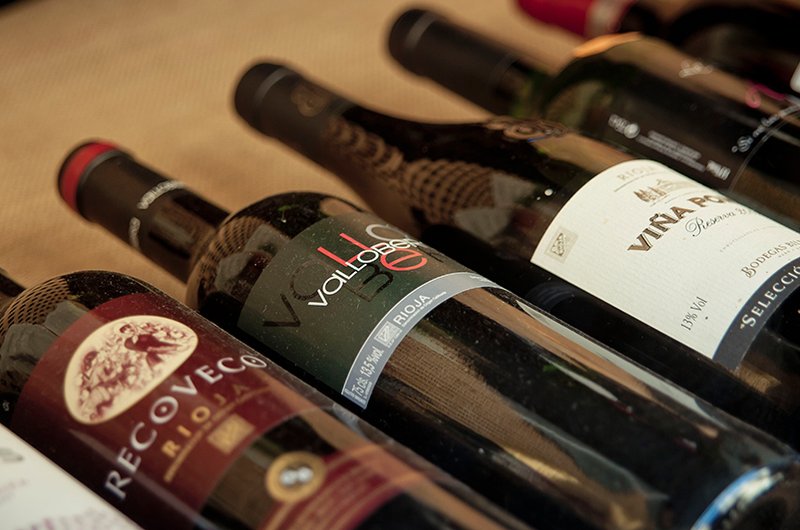
The Spanish wine appellation system is similar to those in France and Italy. There are five tiers, namely:
1. DOCa (Denominación de Origen Calificada)
DOCa wines are the finest Spanish wines. There are only two regions given this prestigious title - La Riojaand Priorat. DOCa regions follow stringent winemaking regulations and have higher grape prices.
2. DO (Denominación de Origen)
The DO denomination describes both the location and the style of wine. To earn this DO title, the wine has to meet quality guidelines specific to the wine region (permitted grapes, vine yields, and aging requirements.)
3. VP (Vino de Pago)
The VP denomination covers independent estates producing quality wine that doesn’t fall under a specific DO area or follow the local DO production laws.
4. VC (Vino de Calidad con Indicación Geográfica)
This category is a stepping stone to a DO status. These wines are in limbo as they don't meet the criteria for a DO status yet are above the VT classification.
5. VT (Vino de la Tierra)
This category of wines isn’t held to DO limitations. Here, the classification focuses on origin rather than style or quality.
In addition to this appellation system, Spanish wine is also regulated by aging laws. There are three standard wine aging tiers in Spain:
- Crianza: Red wines are aged for at least two years, with six months in the barrel. Rioja, Priorat, and Ribera del Duero wines spend at least one year in the barrel. Whites and rosés are aged for one year, with six months in the barrel.
- Reserva: Reds are aged for at least three years, with one year in the barrel. Whites and rosés are aged for at least two years, with six months in the barrel.
- Gran Reserva: Reds are aged for at least five years, with 18 months in the barrel. Rioja, Priorat, and Ribera del Duero wines spend at least two years in the barrel. Whites and rosés are aged for four years, with six months in the barrel.
Let’s begin our Spanish wine tasting journey now.
10 Spanish Wine Regions and Their Best Wines
With over 100 wine regions, it’s not easy to pick just a few wines. Instead, let’s take a grand wine tour of the top 10 Spanish wine regions and see the best bottles from each of them.
1. Rioja
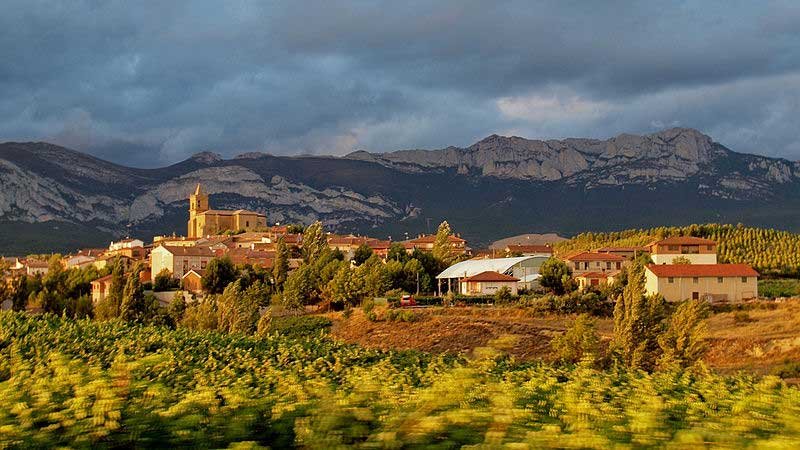
Spain's most famous wine region, Rioja, lies in Northern Spain near the Ebro river.
It was the first region to be awarded the DO status in Spain and one of the only two to be upgraded to a DOCa.
Rioja is divided into three wine-growing regions:
- Rioja Alta is at the highest altitude and produces wines with balanced acidity and bright flavors.
- Rioja Alavesa’s soil contains more limestone, making the wines fuller and more acidic than Rioja Alta.
- Rioja Baja is the driest and warmest of the two. Heavily influenced by the Mediterranean, wines here are focused on Garnacha. Some of this wine region, north of the Ebro river, technically falls under Navarra.
Most Rioja wine is made from the Tempranillo grape mixed with Garnacha, Graciano, and Carignan.
Earthy, berry flavors characterize these red wines with a smooth oaky taste. Barrel-aged Rioja wines are full-bodied and have potent tannins.
Best Rioja Wines:
- 1942 R. Lopez de Heredia Vina Tondonia Gran Reserva (Price: $1,248)
- 1952 Marques de Murrieta Castillo Ygay Gran Reserva Especial (Price: $1,107)
2. Andalucia

Andalucia in Southern Spain is known for its fortified wine, Sherry. It is made from Palomino grapes.
This region’s cooler temperature and the soil’s limestone, chalk, and clay content are essential for the Palomino acidity levels.
This Spanish wine region also has warmer, drier climates around Malaga and Montilla-Moriles. These are perfect for Spain’s heavy dessert wines, made from the Pedro Ximenez and Moscatel grapes.
Top Andalucia Wines:
- 1933 Williams & Humbert Coleccion Anadas Single Cask Oloroso Sherry (Price: $5,476)
- NV Barbadillo Reliquia Amontillado Sherry (Price: $1,095)
3. Catalonia (Catalunya)

Catalonia in northeast Spain is truly unique as it's the country's only cover-all DO. It encompasses all the regions the previous DOs didn't, including Penedes and Priorat.
A) Penedes
One of the oldest wine regions, Penedes, lies a few miles down from Barcelona.
It is famous for Cava - a refreshing sparkling wine and Spain’s answer to Champagne and Prosecco.
Cava is primarily made from Xarel-lo, Macabeo, and Parrillada white grapes. However, recently, Chardonnay and Pinot Noir are also used to produce rosé Cava.
Few other red grape varieties allowed are Garnacha Tinta (Grenache), Monastrell, and Tempranillo.
In Penedes, the Trepat grape variety is allowed only in making rosé wines.
Top Penedes Wines:
- 1998 Torres Reserva Real (Price: $207)
- 2012 Juve y Camps Finca La Siberia Gran Reserva Brut Nature Rose Cava (Price: $146)
B) Priorat
Besides Rioja, Priorat is the only other wine region holding a DOCa qualification and lies 15 miles from the coast.
Mostly known for its reds, this region also produces small quantities of whites and rosés.
Priorat red wine is made from Garnacha and Carinena. Wine producers here also use French grapes - Merlot, Cabernet Sauvignon, and Syrah.
Only four white grape varieties are allowed - Macabeo, Pedro Ximenez, Garnacha Blanca, and Chenin Blanc.
Its vineyards are exceptionally steep with unique slate soil. Since the vines dig deep for water and nutrients, the wines get stronger minerality.
Top Priorat Wines:
- 2013 Alvaro Palacios L'Ermita Velles Vinyes (Price: $2,398)
- 2005 Clos i Terrasses Clos Erasmus (Price: $2,083)
4. Galicia
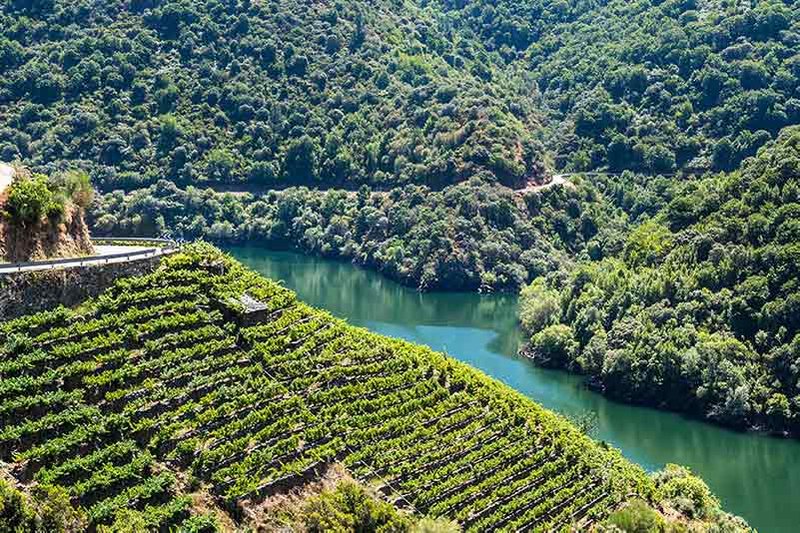
Galicia has been part of Spain's winemaking tradition since the Middle Ages. This wine region lies in northwest Spain, with the Atlantic Ocean on two sides.
Although it receives plenty of rainfall and sunshine, the red wine grapes struggle to ripen fully. That’s why it mainly produces Albarino white wines with citrusy, botanical notes.
Rias Baixasis Galicia's most famous DO.
Its crisp, aromatic white wines must contain at least 70% Albarino grape, with the rest being Loureiro, Treixadura, or Torrontes.
Galician red wines are made far inland, usually from Mencia.
Top Galicia Wines:
- 2016 Bodegas Rafael Palacios Sorte O Soro (Price: $208)
- 2012 Bodegas Valdesil Pedrouzos Godello (Price: $128)
5. Madrid

With over 8800 hectares, 50 wineries, and 100 labels, Madrid is becoming an integral wine part of this wine country.
Although it's the capital, Madrid wasn't renowned for its wine. Recently, however, the local Garnacha Tinta turned this around.
Other grape varieties found here are Merlot, Cabernet Sauvignon, and Syrah for reds. For whites, you'll usually find Parellada, Moscatel, Torrontes, and Viura.
Top Madrid Wines:
- 2017 Comando G Las Umbrias (Price: $199)
- 2018 Comando G La Brena (Price: $124)
6. Castilla y Leon
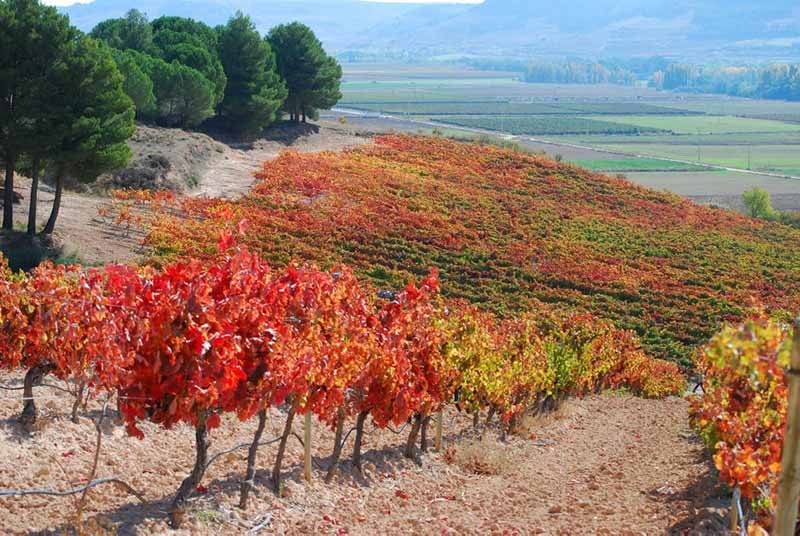
This wine region covers about one-fifth of Spain's entire surface. It connects the Rioja wine region to Portugal’s border. The Duero river runs along all its major regions.
Two famous Castilla y Leon wine regions are:
A) Ribera del Duero
Ribera del Duero is devoted to red wines made from the Tempranillo grape - locally known as Tinto Fino or Tinto de Toro.
Situated along the banks of the Duero river, this wine region also houses Spain's most famous winery, Vega Sicilia.
Regulations dictate that Tempranillo must make up at least 75% of all red wines, usually blended with Merlot, Malbec, or Cabernet Sauvignon.
Albillo - the only white grape planted here - mainly produces table wines. It's also allowed in small quantities as a softener for dense reds. Garnacha is used for rosé wines or as a blending grape.
Top Ribera del Duero Wines:
- 1921 Vega Sicilia Unico Gran Reserva (Price: $3,530)
- 2004 Dominio de Pingus 'Pingus' (Price: $1,832)
B) Rueda
Rueda lies northwest of Madrid and is known for its fresh, aromatic white wines made from Verdejo.
All Rueda whites have to be 50% Verdejo, but a recent change allows a 50% composition of Sauvignon Blanc. The other permitted grapes are Chardonnay and Viognier.
Rueda also produces a white sparkling wine (made from either Verdejo or Sauvignon Blanc) and a fortified wine (made using either the Verdejo grape or Palomino).
However, the Verdejo grape is still the king, controlling almost 90% of Rueda's territory.
Top Rueda Wines:
- 2007 Bodega Belondrade y Lurton Verdejo (Price: $66)
- 2014 Bodegas Jose Pariente Cuvee Especial Verdejo (Price: $51)
If you're in the UK you can get a case of fine Castilla y Leon wine at VinoSelect.
7. Valencia

The history of wine production in Valencia goes back to the Neolithic Age!
The chalky, sandy, and limestone-rich soil of this sunny east coast wine region is perfect for the growth of the Monastrell grape, which produces the region’s rich, fruit-driven red wine.
Valencia also produces a small amount of Cava wine.
The aging process is very different compared to the Rioja wine region. Crianza refers to wines aged for three months, while Reserva wines are aged for six.
Top Valencia Wines:
- 1987 Bodegas Gutierrez de la Vega Casta Diva Recondita Armonia (Price: $170)
- 2005 Sierra Salinas 1237 (Price: $144)
8. Navarra
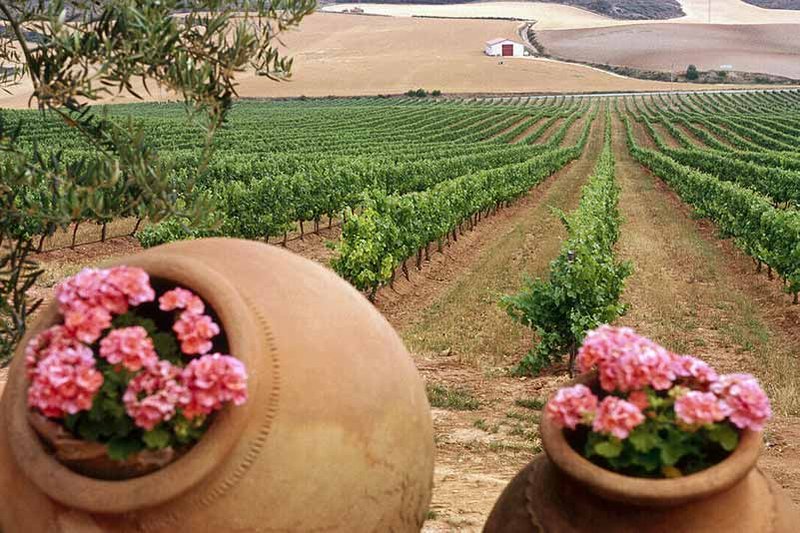
With a moderate Mediterranean climate, Navarra has been famous for its dry, fruity Garnacha rosé.
However, the success of recent Tempranillo red wines has pushed winemakers to make it the primary grape variety.
These wines are fruity yet concentrated reds with a noticeable oak influence. They feature Merlot, Cabernet Sauvignon, and Pinot Noir.
This wine region also produces a small amount of white wine from Chardonnay, Garnacha Blanca, Viura, and sweet Moscatel wines.
Top Navarra Wines:
- 2016 Chivite Coleccion 125 Vendimia Tardia Blanco Moscatel (Price: $87)
- 2004 Chivite Coleccion 125 Blanco Chardonnay (Price: $80)
9. Castilla La Mancha
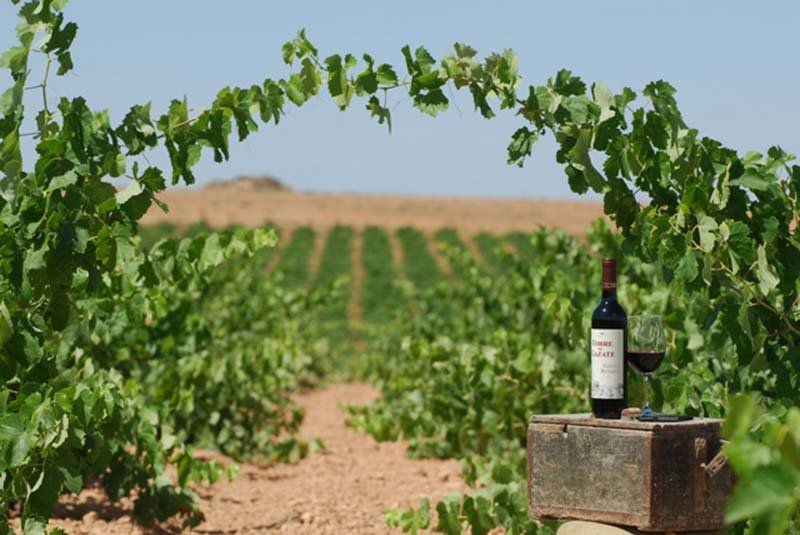
Castilla La Mancha is Europe’s largest wine region, spanning over 200,000 hectares. It lies southeast of Madrid and produces over 50% of Spain’s grapes.
Airen is the most planted grape in Castilla La Mancha. However, Airen isn't respected globally - the reason why red blends overpower Airen varietal wines in this wine region.
Castilla La Mancha reds are made from Tempranillo (Tinto Fino), Garnacha Tinta, Syrah, and Monastrell grape varieties.
This region also features the trail-blazing Dominio de Valdepusa vineyard.
Top Castilla La Mancha Wines:
- 2015 Finca Los Aljibes 'Selectus' Vino de la Tierra de Castilla (Price: $199)
- 2008 Daniel Gomez Jimenez-Landi 'Cantos del Diablo' (Price: $95)
10. Jumilla
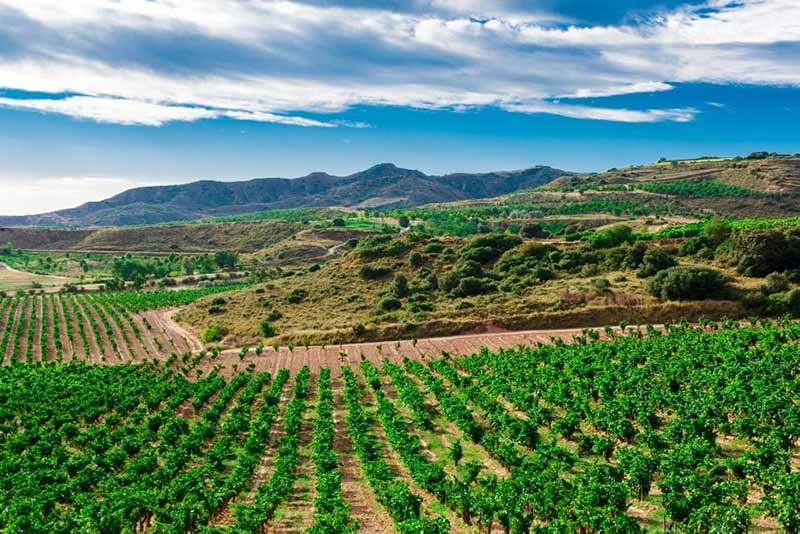
Jumilla wine region is located in Murcia in the southeast of Castilla La Mancha.
This wine region produces red and rose wines made from at least 80% Monastrell grapes. International grapes like Merlot, Syrah, and Cabernet Sauvignon are also allowed in the blend.
Jumilla also produces a sweet wine, Jumilla Dulce, made from local grapes and can be red, rose, or white.
Airen, Pedro Ximenez, and Macabeo white grapes are common here. Recently, Chardonnay has been allowed as well.
Top Jumilla Wines:
- 2007 Bodegas El Nido 'El Nido' (Price: $244)
- 2009 Bodegas El Nido 'Clio' (Price: $115)
11. Other Spanish Wine Regions
We couldn’t let you go without mentioning a few more of Spain’s wine regions. These may not produce the most investment-worthy wines but are a treat for any wine lover!
- Aragon: It is a northern Spanish wine region known for its Garnacha, Tempranillo, and Carinena red wines. Recently, one Aragon vineyard became a designation VP vineyard.
- The Balearic Islands: Wine production has happened here since 120 BCE. The region’s winemakers produce fresh, aromatic table wine from indigenous grape varieties like Fogoneu and Manto Negro. Although some international red grape varieties like Merlot are also allowed.
- The Canary Islands: The Canary Islands are known for their sweet wine made from indigenous grape varieties, such as Palomino and Listan Negro.
Let’s get a glimpse of how Spanish wines are produced.
Spanish Winemaking - A Blend of Old and New World Techniques
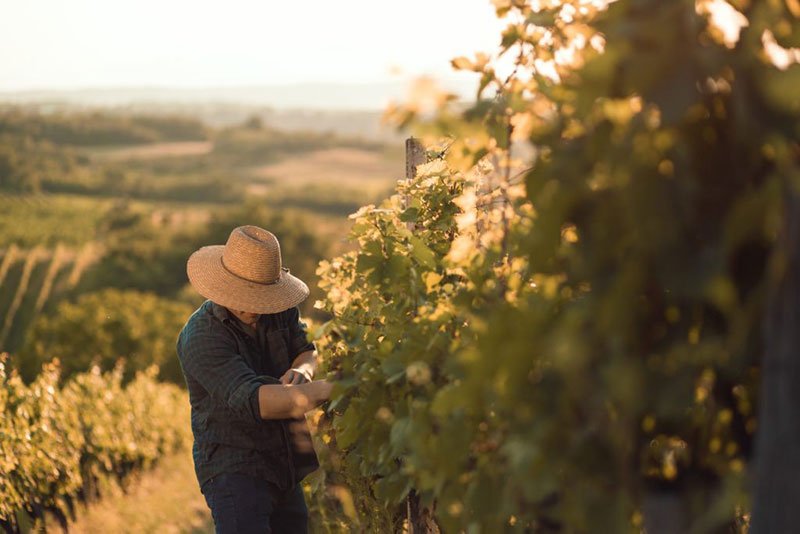
For centuries, Spanish winemakers used Old World techniques to age wines - sometimes for two decades.
In the 19th and 20th centuries, winemakers preferred cheaper and more intensely flavored American oak barrels, especially for Tempranillo grapes. However, in the 1990s, French barrels took over.
Today, some wineries use both.
Spanish wine producers have also adopted a fair amount of modernized New World techniques like temperature-controlled steel tanks for white wine fermentation, especially in warmer regions of Andalucia and Castilla La Mancha.
This is even more evident in Cava production.
Cava is a sparkling wine native to Spain. Here, winemakers add a mixture of sugar and yeast to the base wine in the bottle. This second fermentation process creates carbon dioxide in the bottle, leading to the characteristic bubbles and fizz.
On the other hand, the fortified Sherry wine still follows most Old World winemaking traditions.
Sherry wine is produced almost exclusively in the Sherry triangle - Jerez, Sanlucar de Barrameda, and El Puerto de Santa Maria.
- In Jerez, winemakers add brandy which increases the alcohol content and kills the yeast. This wine is called Oloroso, meaning pungent.
- In Sanlúcar, the Atlantic breeze chills the wine cellars, keeping the wines very light and fresh, almost like apples. So, the wine here is called Manzanilla, meaning little apple.
- Sherry from the El Puerto region is similar to Jerez but with stronger aromatics.
Now that you’ve taken a virtual wine tour through Spain, how about adding some of the finest Spanish wines to your collection?
Through a world-class wine investment company like Vinovest, you can buy, store, and sell authentic wines from around the world!
Add a Fine Spanish Wine to Your Cellar!
The magnificent Spanish wine regions are home to some of the most delicious and precious wines that impress every wine enthusiast.
With Vinovest, you can buy and invest in some of the finest and rarest wines, especially those from our handy Spanish wine guide above. Visit the website to know more now.
